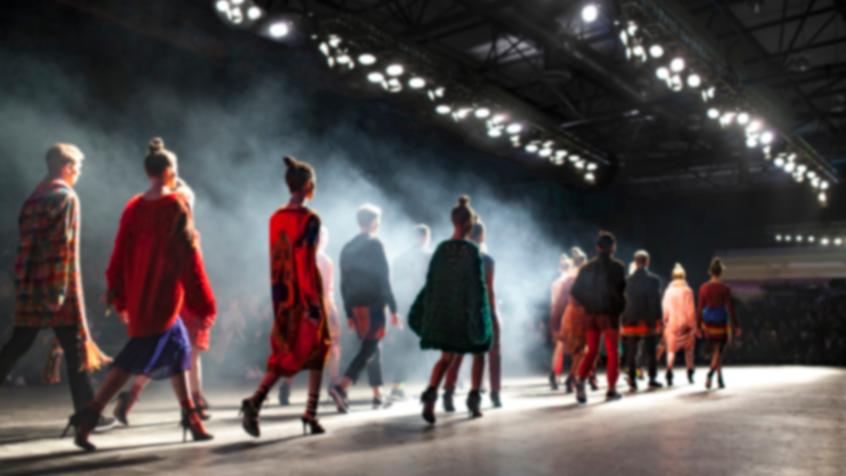Wag the dog: how influencers are changing the way We design
These rising stars of social media are not only transforming how we sell fashion, but also when and how that fashion is created in the first place.

Influencers are changing the way we market fashion
Announce that influencers are changing the way we market fashion to a crowd of industry professionals and you’re likely to get an unimpressed, “Tell me something I don’t know” in response. It’s no secret that fashion blogging and its little sister, Instagram, have revolutionized fashion marketing; the phenomenon is hardly surprising when you consider that more than a third of millennial women (35%) say that social media has a major influence on their clothing purchases, according to a 2015 survey by Mintel.
What might earn you some street cred, however, is the news that—in an unexpected case of role reversal—these rising stars of social media are not only transforming how we sell fashion, but also when and how that fashion is created in the first place.
The New Gatekeepers
For better or for worse (at least, according to Vogue), fashion bloggers and Instagram It girls have joined the ranks of actors, musicians and other trendsetters who play a role in determining what people wear, how they wear it and—by extension—what consumers want brands to create. Why? Because influencers appeal to millennials, who want to interact and hear from “people like themselves”.
In today’s millennial marketplace, keeping tabs on what major influencers are wearing and sharing, follower counts, user-engagement levels, reposts, likes and comments, has become as indispensable to design departments as trend forecasting. The average fashion blogger can now influence major designers via social media in a way that would have been unheard of fifteen years ago, and brands are scrambling to come up with original, innovative product that will appeal to these powerful new gatekeepers.
Democratizing Fashion
But the “influencer effect” on design extends beyond just shaping streetwear style, cultivating a taste for personalized fashion, and the standard scope of sponsored posts, product endorsements and brand partnerships. The presence of influencers at events like Fashion Week has blurred the lines between a once exclusive fashion community and the general public, and amplified the need to accelerate the design process itself. Gone are the days when avid fashionistas waited patiently for the September issue of Bazaar to get a glimpse of those runway looks. Thanks to Snapchat and Instagram, those images are available immediately—and once they start circulating on social media, the clock is ticking. Brands that take weeks to deliver those styles to market now risk having customer interest wane by the time they hit the shelves. “See now, buy now” is very much a product of the digital age.
The interactive nature of social media has made it possible for influencers—and the general public—to engage directly with designers and become involved in the creation process. As detailed in the NY Times, designer Zac Posen’s 2015 spring/summer collection was partly inspired by comments and suggestions from his 640,000+ Instagram followers, who asked for prints in the same sunset hues as a vacation picture Posen had posted on Instagram. The designer worked with his team to digitalize the print and blow it up on silk, which he used to create a maxi dress for the collection. “We’re getting to a point where marketing and design go hand-in-hand, especially in the U.S. where designers have to be super-commercial,” notes Rachel Arthur, a fashion trend forecaster at WGSN in New York.
Designing for the Flat Screen
With the rise of influencers also comes the very real possibility that most shoppers’ first point of contact with new styles will occur on a flat screen (probably a smartphone). This has created a whole new set of considerations that designers need to keep in mind. “[I] think about how a piece will photograph, whether the colors are saturated enough to withstand filters, and how print will translate,” explains New York designer Rebecca Minkoff. For some, the 2D screen does their creations a disservice, failing to convey subtle nuances in color, or the minute handiwork often found in couture. For others, it is an advantage; London designer Mary Katrantzou credits her brilliant prints and color palette for making her work stand out from the crowd on the web, giving her an edge over designers who aren’t attuned to the online appeal of their wares.
From Influencing Design to Designer with Influence
With influencers changing what and how fast we design, it was really only a matter of time before some of them took things one step further and became designers themselves. Italian blogger, Chiara Ferragni, launched a line of shoes in 2013 that is now sold in more than 300 stores worldwide. Across the Atlantic, social media superstar Lauren Conrad recently released her third (and first plus-size) collection for the Lauren LC Conrad for Kohl’s clothing line. Meanwhile, France’s favorite Instagram darling, Jeanne Damas, launched ready-to-wear brand Rouje in 2016. With a built-in audience of fans and a carefully curated image, influencers no longer have to depend on brands to create the product they want—they have the means at their disposal to develop, promote and sell their own. Once a marketing vehicle for big-name brands, these digital ambassadors are now in a position to give them a real run for their money. And so, the influencer-designer relationship has come full circle.
With regulatory boards cracking down on sponsored posts, and hashtags like #ad or #sponsored becoming de rigueur, the future of influencers—whose power lies in their perceived authenticity—is unclear. Consumers are growing savvier and today’s youth have knack for detecting anything that hints of corporate purse strings. One thing is certain—the rise of influencers and social media has democratized fashion and revolutionized the way today’s design departments need to think and operate. As for what changes they (or their successors) will bring to the table tomorrow, only time will tell. Watch this space.
Testimonials
Tiziana Cardini
Latest resources









